Don't wanna be here? Send us removal request.
Text
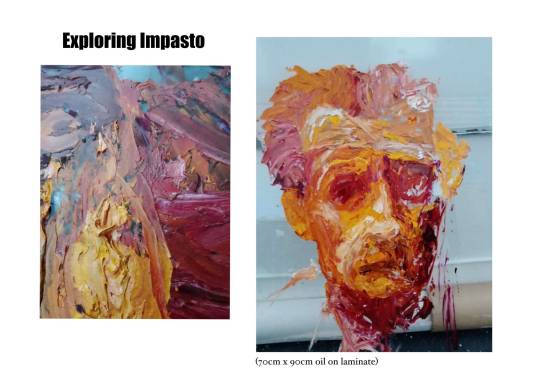
2023. This is a colour study of actor John Hurt, portraying the character of Winston from George Orwell’s 1984. I used laminate surfaces within my work to begin a series of impasto paintings. In the beginning, I experimented with acrylic. This was unsuccessful because the acrylic wouldn’t adhere to the surface. This is when I decided to use oil paint. This series of paintings explores my application of paint with surface textures. This painting represents Winston’s rebellion in the early stages of the book, 1984, and uses red to characterise his revolt. I researched into Van Gogh’s later works and Clare Woods for inspiration. They presented uncontrolled looseness and freedom within their process.
0 notes
Text
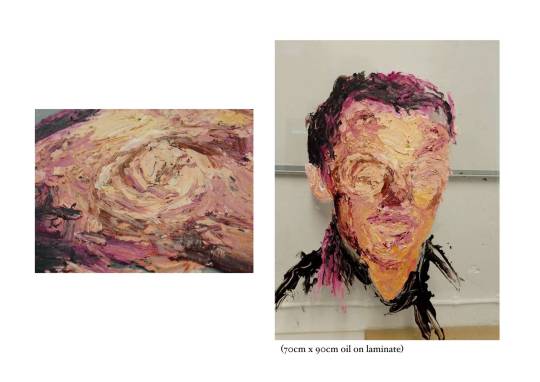
This composition of actor John Hurt, from the film 1984, further explores impasto painting, using a more honest palette to his skin tones so that it is still recognisable as a face. In this piece, I wanted to deconstruct Hurt’s face to show his loss of individually as Winston, inflicted by Big Brother in the book. This painting uses complementary colours of purple, pink, and yellow to create visually pleasing contrasts and vivid colours.
0 notes
Text
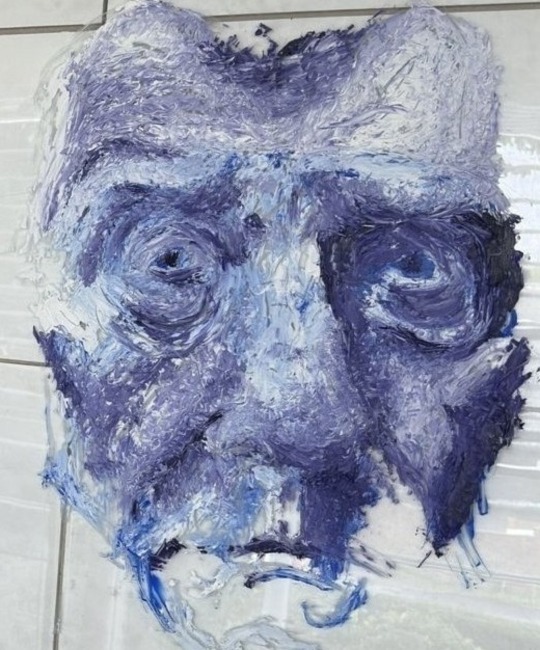
This painting is again of John Hurt in 1984, playing the character of Winston. Within this composition I characterised a sense of confusion and despair in Hurt’s funnelled brow and pale blue and purple tones as reflection of his inner monologue that we experience more in the book, where he constantly battles with the suspicions of others. This painting, alongside my previous works of John Hurt, was featured at the Courtyard in Hereford as part of the Cultivate competition where I received first place.
0 notes
Text

This is my final composition of Winston from the film 1984, which conveys how the societal regime, Big Brother, demoralised Winston. I painted his eyes with thick impasto to express Winston’s torment through O’Brien’s deceit and Winston’s punishment that he received in room 101. The red paint depicts violence and the severity of his torture. While blue represents his isolation and loss of individuality.
0 notes
Text
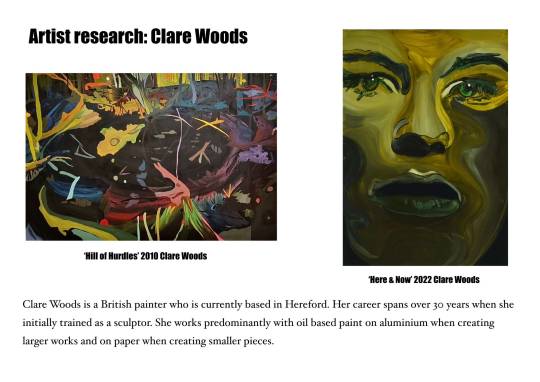
My research into Clare Woods enabled more thought towards alternative substrates to canvas. The skips at college provided this alternative in the form of laminate sheets, which were common after covid. I created the previous series of works with oil on laminate, exploring the impasto application of paint.
0 notes
Text
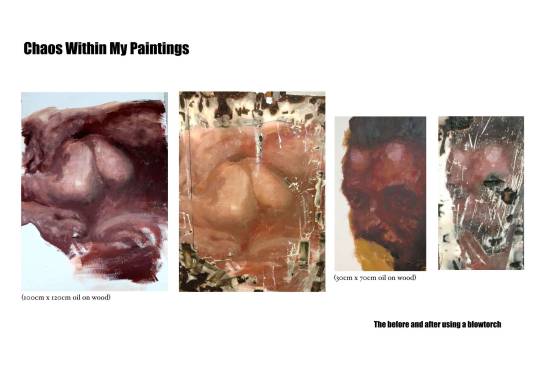
I was persuaded by my tutor to be experimental with both my approach and use of materials. I was repulsed by images seen on smoking packets and was inspired to reflect this graphic imagery in my work. I researched Francis Bacon for aesthetic inspiration in deconstructing the human body. Red and pink oil paints were the main colour choice, as it reflected lifelike fleshy tones. I used a blowtorch to add to the theme of destruction and to also play with surface substance to see what textures and patterns I can conjure.
0 notes
Text
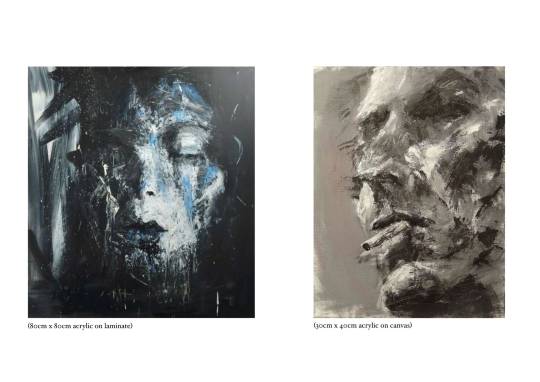
These are experimental paintings of the singer and actor David Bowie. This painting on the left was done on a laminate sheet, which I found in the skips outside the college. This was a further exploration into laminate surfaces within my work. This painting is a reflection of Bowie during his performances, where he embodies and embraces different portrayals and stage characters like Ziggy Stardust. The painting of Bowie on the right is dine on canvas, which characterised his thought-provoking side and off-stage introverted character. I used black and white in both pieces to harmonise the two together as both characters belong to Bowie.
0 notes
Text
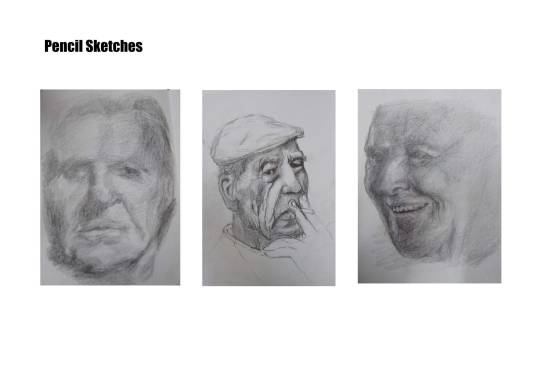
These are portrait sketches of actors Anthony Hopkins and Ian McKellen.
0 notes
Text
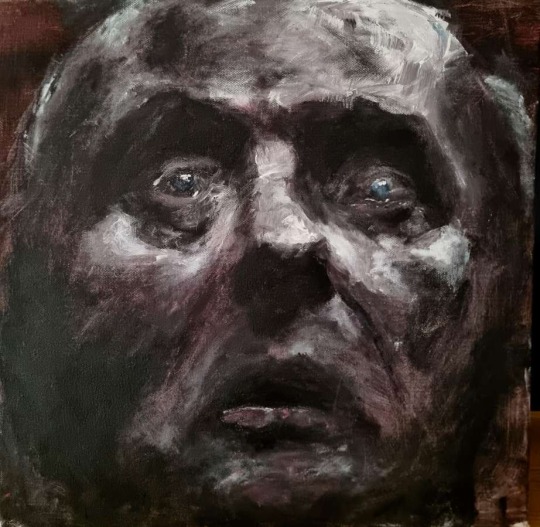
After watching Silence Of The Lambs and admiring Anthony Hopkins’s characterful performance as Hannibal Lecter, I wanted to capture the cold, in-human, and careless expression in this painting. This was done by enhancing the lighting, which intensified the shadows. I used a minimal palette consisting of acrylic in black, white, and red, creating a malevolent undertone to his psyche. The gaze of Hannibal stares up and towards his freedom after escaping the asylum. Adding a suggestion of sinister complexities in his character.
0 notes
Text
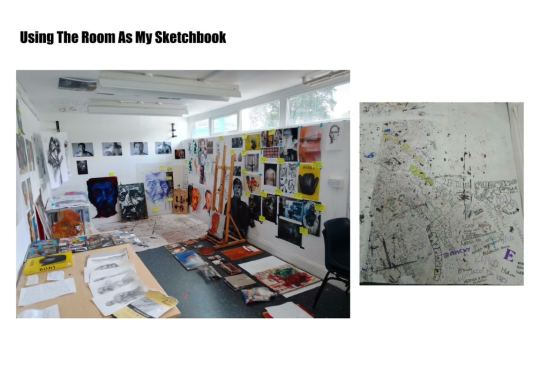
This was my ever-changing room in Diploma, which served as a documentation of my ideas and work at the time. Alternatively, I used this room as a sketchbook where I displayed my inspirational interests such as actors, photographers, musicians, artists, and preparatory studies. My tutor appreciated that we all work differently. This room helped me focus on documenting my work and thoughts as I painted within my painting sessions. I even used the floor to write down artists from all areas for future use and study.
0 notes
Text
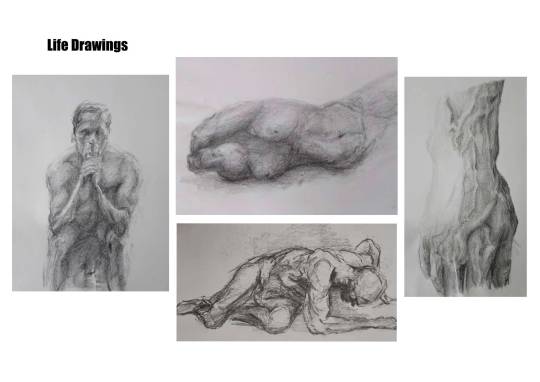
2024. During my three years at Hereford College of Arts, I created an extensive number of life drawings. This is an example of a composition I favour, as it displays a muscular definition within the body. Anatomy is a topic of interest, as it creates realism through shapes that create weight and gravity to the subject in my artwork. This is important to my practice as charcoal indicates the brushstrokes’ directional approach.
0 notes
Text
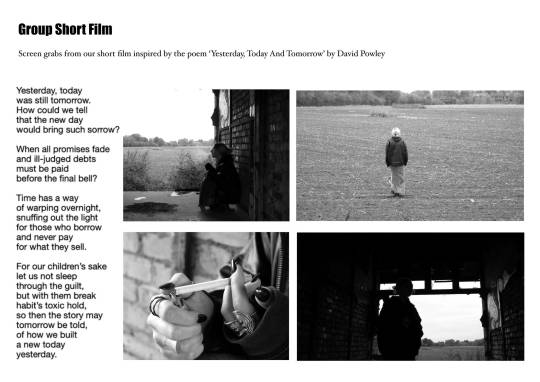
These are screen grabs from our short group film inspired by the poem “Yesterday, Today and Tomorrow” by David Powley. My main role was to co-direct and operate the camera. I directed these scenes by engaging with the derelict building and desolate location to provoke a dystopic aesthetic to the verses in the poem. I took main inspirations from the line ‘let us not sleep through guilt, but then break habits toxic hold,’ and the line ‘ill judged debts must be paid before the final bell.’ This reflects through the silent character, as she reminisces the world in her final days, wondering with no real sense of direction nor purpose. Japanese filmmakers like Akira Kurosawa and Tomu Uchida from the 1950s influenced the black and white aesthetic in our film, as it symbolises the world’s slow departure from existence.
0 notes
Text
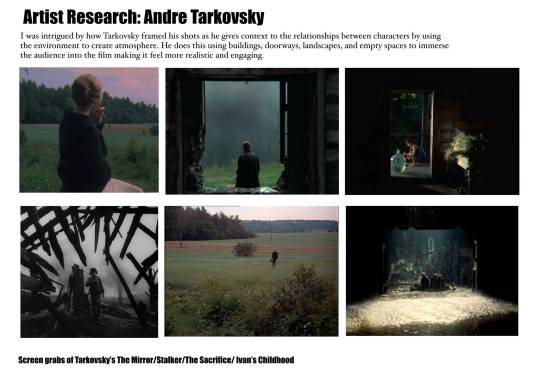
My research into Tarkovsky has allowed me to have more thought on the visual narration within my work. It was Tarkovsky’s use of framing the characters, which captured inner dialogues, through body language, and expression in the eyes, seen in the film Ivan's Childhood. My next project explores my works engagement with the viewer, through ambiguity and inferable narratives.
0 notes
Text
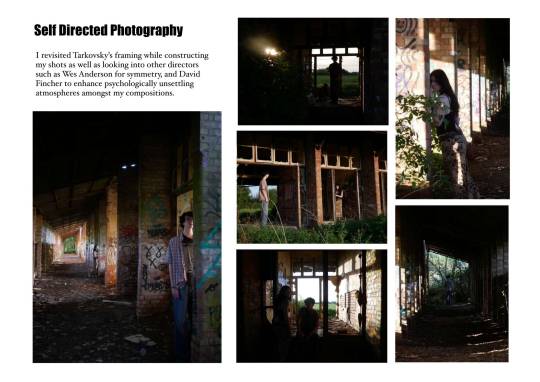
My photography explored figurative compositions inspired by filmmakers: Tarkovsky, for his use of framing and David Fincher’s surreal compositions, and Wes Anderson’s use of symmetry. Further exploring character development and storytelling between two characters and their environment, my photography investigated the use of choosing how much information I want to convey to the viewer in terms of its storyline.

These are my tonal studies of my photography. This helps my painting process as it visually enables me to determine depth between the foreground and backgrounds.
0 notes
Text
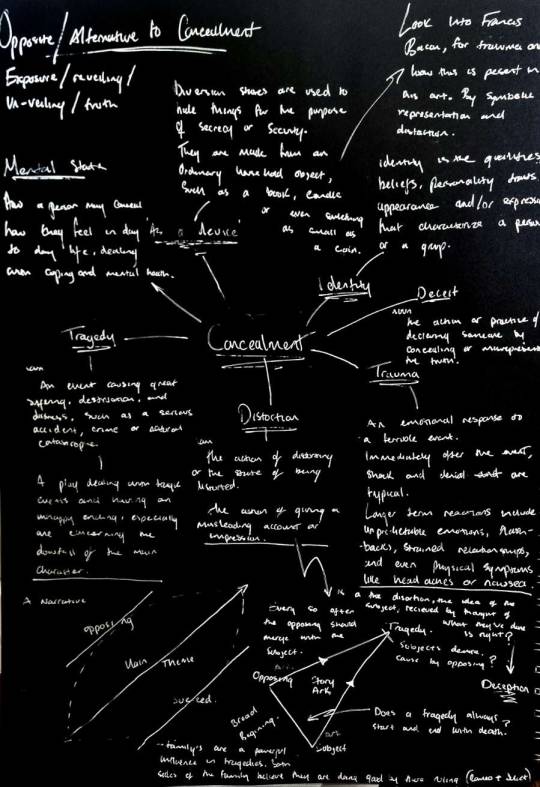
This was one of my mind-maps in Foundation at Hereford College of Arts, displaying thoughts and potential ideas at this period of the project. This would be updated through the week, as I researched into various areas, dictating the direction of the project.
0 notes
Text
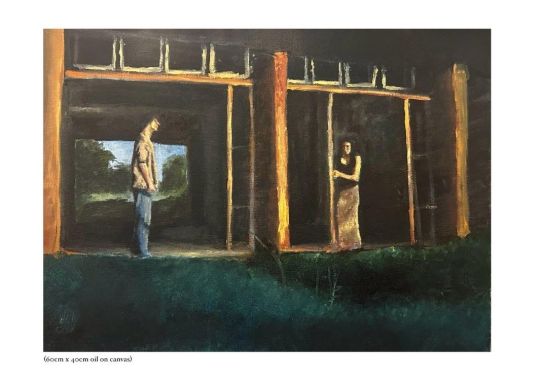
This work consists of inspiration from Wes Anderson’s symmetry and vibrant colour use within his shots. My palette was inspired by Edward Hopper and his use of bold colour to enhance the cinematic style. The woman seen on the right hides away from the tall figure seen on the left of the building, almost trying to hide. I used the buildings symmetrical aspects to suggest there may be some familiarity between the relationship of the two figures. They both stand facing each others direction but are separated by the structure of the wall. The audience can infer and conjure their own conclusions from this information.
0 notes
Text
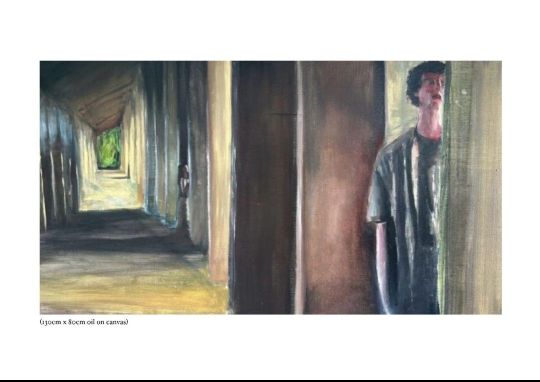
Within this piece, I wanted to add more psychological context inspired by David Fincher’s finales in films such as Seven, Gone Girl, and Fight Club. Both characters are aware of the presence of one another, however cannot see each other. It presents itself as dramatic irony as the audience knows more than the characters. This allows the audience’s subjective imagination to escalate the story narrative as to what happens next. The canvas is elongated, which immerses the viewer as they get closer to the painting.
0 notes